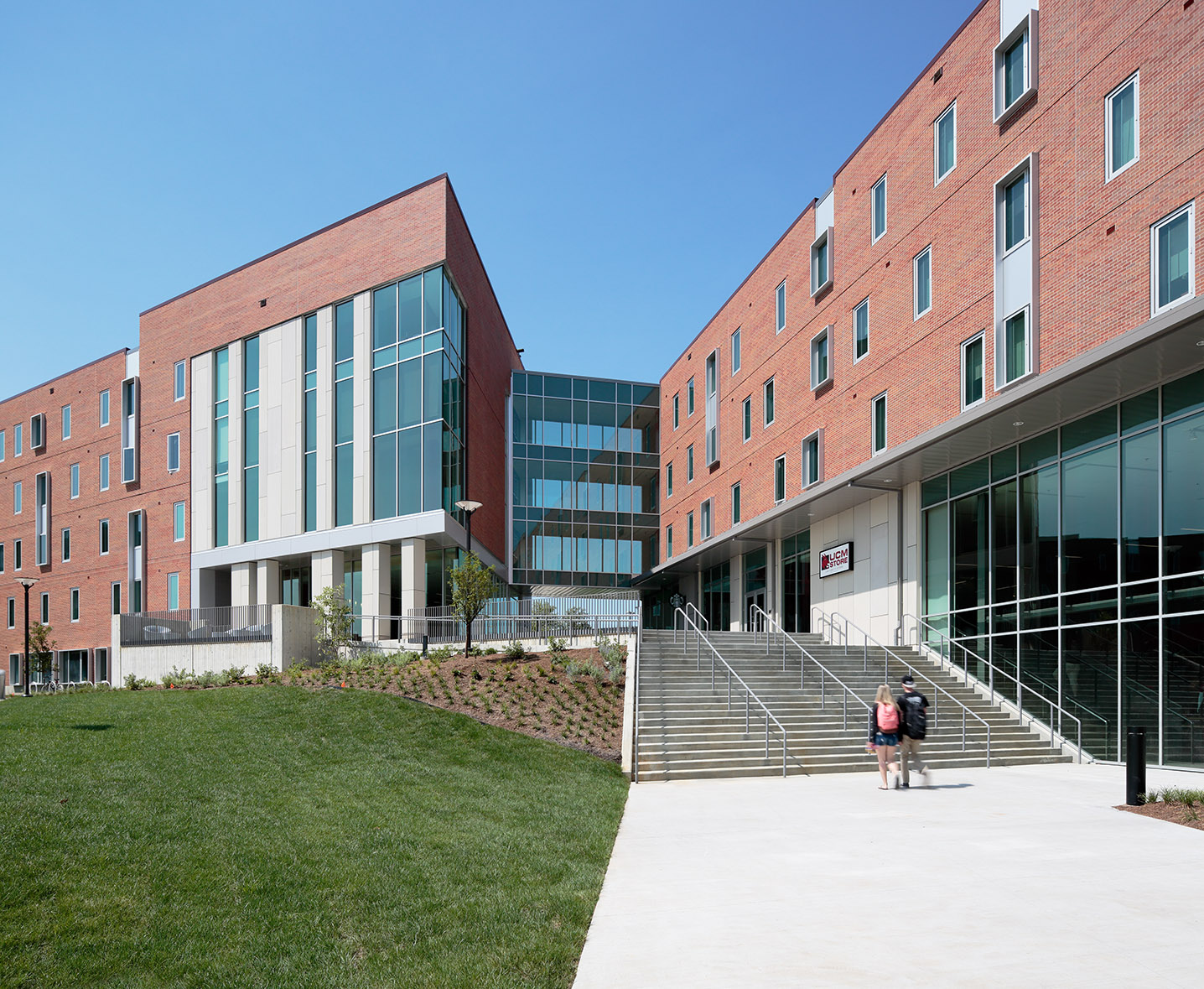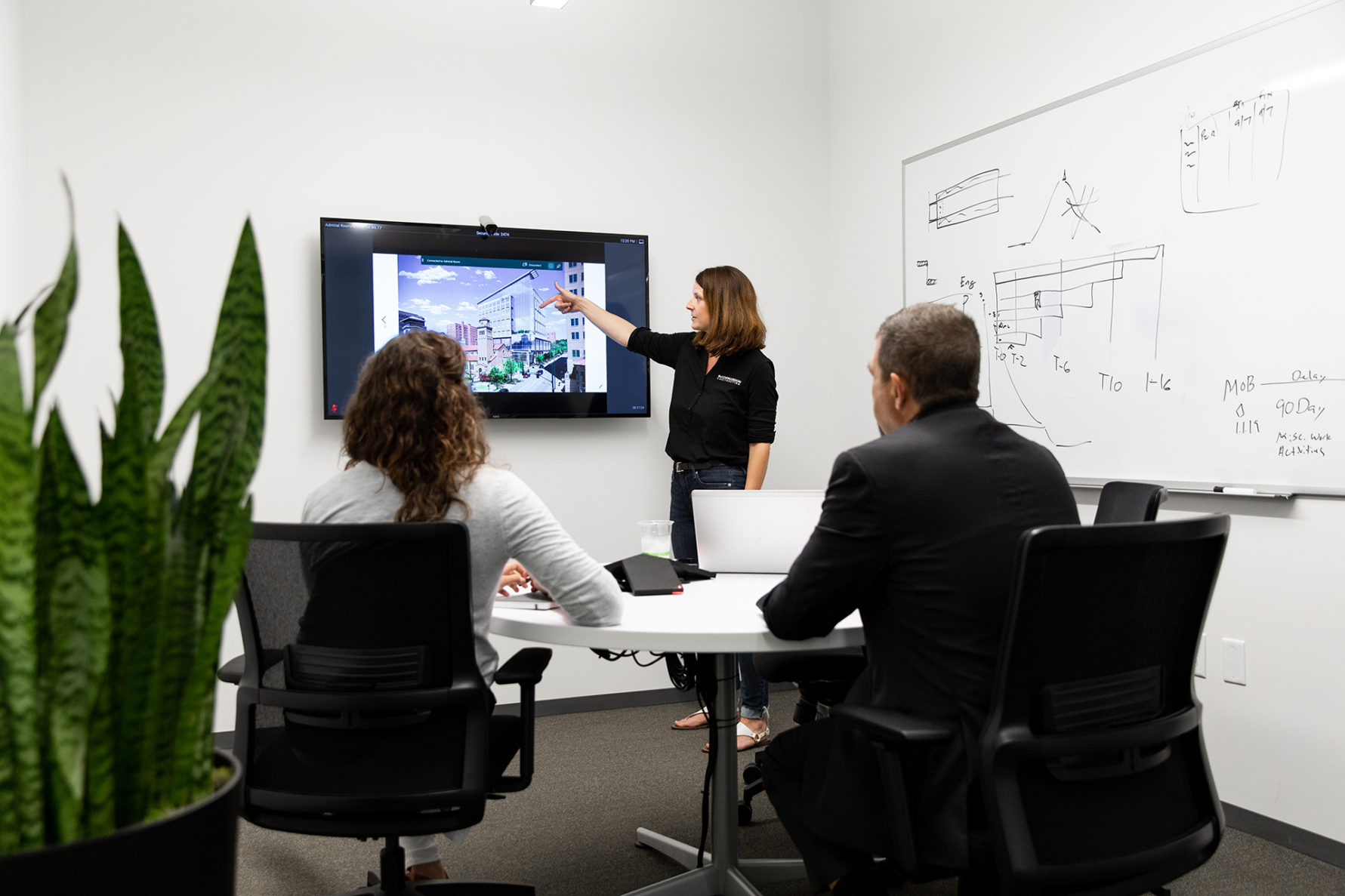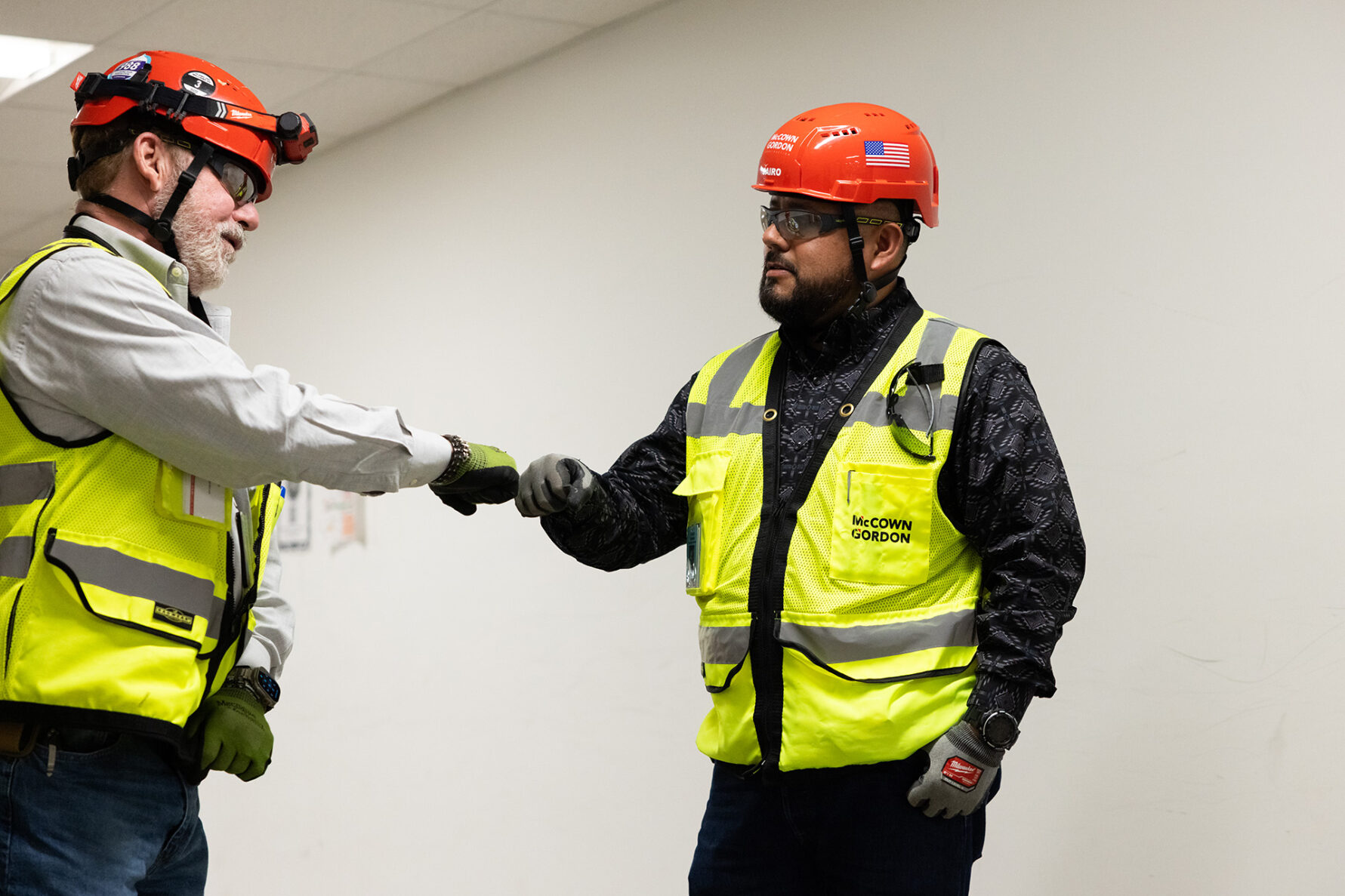The Pros & Cons of Various Structure Types for Student Housing

When planning student housing for higher education institutions, choosing the right structure type is crucial. Each option comes with its own set of advantages and disadvantages regarding costs, sustainability, flexibility, and overall student experience. It can be challenging to select the right structure type for your project. Below, we break down the pros and cons for some of the most common structure types in student housing:
1. Wood Frame Construction
Pros: Wood frame construction is a popular method of building – especially for townhouses and low-rise apartment buildings. The cost-effectiveness of wood and the speed of construction makes this a popular choice on higher education campuses. Wood frame construction can help achieve desired sustainability and energy efficiency goals as the wood can achieve high levels of energy efficiency with proper insulation and air sealing techniques. The renewable resource of wood can be easily harvested, making wood frame construction environmentally friendly, compared to alternative materials such as concrete and steel. Additionally, wood frame construction utilizes the required demising walls as part of the load-bearing structure and can accommodate various architectural styles and building shapes.
Cons: It is no secret that wood poses a fire risk. Even when treated with fire-resistant coatings or materials, the fire risk is higher compared to other building materials. This can mean greater insurance considerations and potentially higher premiums compared to other structure types. Wood is also susceptible to moisture damage which can lead to serious structural issues if not properly protected. Wood also requires more regular maintenance to protect against moisture, wear and unwanted pests. Due to the frequency of load-bearing walls, wood has less future flexibility than concrete or steel. Lastly, compared to steel or concrete, wood frame construction has limitations in terms of building height due to load-bearing issues, technological constraints and fire risk.
Takeaway: Wood frame construction can be a cost-effective and environmentally friendly structure type for low-rise student housing buildings. However, you must be prepared to potentially pay higher insurance premiums due to the fire risk and perform regular maintenance on the wood to maintain the integrity of the structure.
2. Light Gage / Metal Stud Construction
Pros: Metal stud construction has gained popularity in both residential and commercial construction due to its durability, versatility and ease of installation. Light gage / metal stud provides an excellent strength-to-weight ratio, ensuring structural integrity and the ability to support multiple stories. The speed of construction with metal stud is also advantageous to higher education institutions who are looking to get heads in beds as quickly as possible. Metal studs can be pre-cut and assembled off-site, reducing construction time, and increasing efficiency. Metal studs are also lightweight and often easier to handle than wood, allowing for quicker on-site assembly. Unlike wood, metal studs are non-combustible and resistant to moisture and harmful pests such as termites. Metal studs can also withstand higher loads making them ideal for taller structures. Similar to wood, metal stud construction allows for flexible designs such as curved walls or unique geometries due to the ability to cut and shape the metal.
Cons: The initial cost of metal studs may be significantly higher than wood, but the durability and reduced long-term maintenance costs can offset the initial investment and level out the lifetime building costs. Another added cost with metal stud construction may be the specialized labor required to work with metal stud framing techniques. Metal studs require different handling techniques and tools along with precise measurements and accurate alignment of tracks and channels. Construction crews must be familiar with cutting, fastening, and bending metal studs, and understand how to measure and cut to fit the specific dimensions of a building. In student housing applications, additional insulation or soundproofing measures may be required to mitigate the transfer of sound that happens more easily than in wood studs.
Takeaway: Metal stud construction offers a robust alternative to wood framing, but at a price. The initial investment required with metal stud construction may seem intimidating, but the durability, flexibility and longevity of this structure type makes it a great choice for student housing projects.
3. Concrete Construction
Pros: Concrete construction is widely used for projects requiring durability and low maintenance. Concrete is resistant to impacts, weathering and wear making it a great choice for buildings that need to withstand the test of time and abuse from constantly changing tenants. Similar to metal stud construction, concrete is low maintenance and requires minimal upkeep over its lifespan. Concrete is non-combustible and meets or exceeds fire safety codes and regulations, which is crucial for student housing. Concrete floors also provide excellent sound insulation which is desirable for student living spaces. Due to the open floor plan of most concrete buildings, future renovation and reconfiguration of space is easier and more cost effective with concrete construction than with load-bearing wood or light gage studs.
Cons: Similar to metal stud construction, the initial cost of concrete construction can be higher than other materials due to the need of reinforcement and specialized labor. Additionally, concrete structures often require longer construction periods to allow for the concrete to sufficiently cure. The heavy nature of concrete requires larger and more expensive foundations. This can be a significant challenge, especially in areas with poor soil conditions. The weight of concrete also increases transportation costs and requires heavy machinery for handling which adds to the overall project cost. Proper insulation of concrete buildings is critical. Concrete has high thermal conductivity and can suffer from poor thermal performance, leading to higher energy costs for both heating and cooling.
Takeaway: Concrete construction is a durable, fire-resistant structure type ideal for high-rise student housing buildings and large-scale projects with a focus on long-term investment. However, there are design limitations, higher up-front costs and potential schedule challenges that need to be weighed when considering concrete construction for higher education student housing.
The success of a student housing project starts long before the students occupy the building. Researching the various structure types and comparing the advantages and disadvantages with the goals of the project is critical to the project’s success.
Let’s talk about your project! Our construction experts would love to talk with you about your project goals and help you determine the best structure type for your project.
Follow Us
McCownGordon strives to be a thought leader in our industry and provide continuous insight and updates to our clients to ensure we're keeping up with the latest technology and safety standards and regulations.
Sign Up


